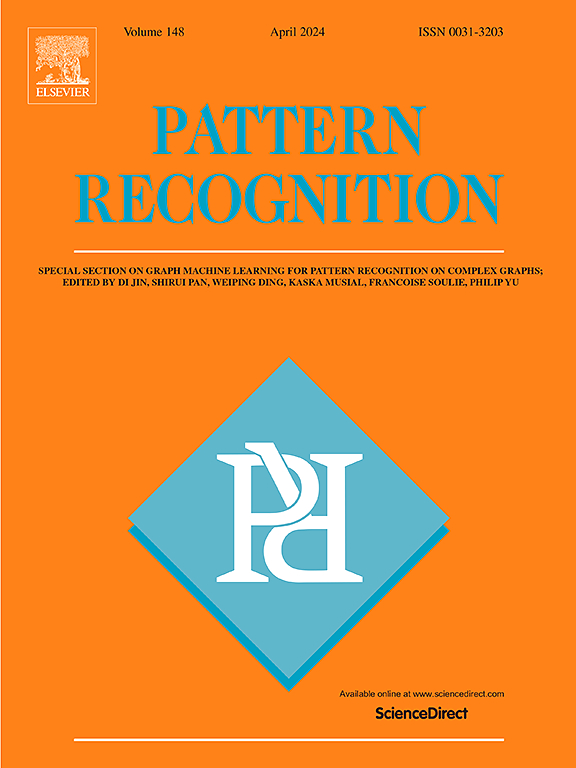VCGPrompt:视觉语言模型的视觉概念图感知提示学习
IF 7.6
1区 计算机科学
Q1 COMPUTER SCIENCE, ARTIFICIAL INTELLIGENCE
引用次数: 0
摘要
快速学习可以对视觉语言模型(vlm)进行有效的微调,如CLIP,展示了在不同下游任务之间的强大可转移性。然而,使vlm适应开放词汇表任务是具有挑战性的,因为需要识别各种不可见的数据,这可能导致过拟合并阻碍泛化。为了解决这个问题,我们提出了视觉概念图感知提示学习(VCGPrompt),它构建视觉概念图并使用细粒度的文本提示来丰富模型的一般世界知识。此外,我们引入了视觉概念图聚合模块(Visual Concept Graph Aggregation Module, VCGAM),对每个类别中最具特色的视觉概念进行优先级排序,并指导相关视觉特征的学习,增强了对开放世界的感知能力。我们的方法在三种不同的泛化设置(包括base-to-new、跨数据集和域泛化)中实现了一致的改进,性能提升高达0.95%。这些结果证明了我们的方法在各种情况下的鲁棒性和广泛适用性。详细的消融研究和分析验证了在开放词汇设置中使用细粒度提示的必要性。本文章由计算机程序翻译,如有差异,请以英文原文为准。
VCGPrompt: Visual Concept Graph-Aware Prompt Learning for Vision-Language Models
Prompt learning enables efficient fine-tuning of visual-language models (VLMs) like CLIP, demonstrating strong transferability across varied downstream tasks. However, adapting VLMs to open-vocabulary tasks is challenging due to the requirement to recognize diverse unseen data, which can cause overfitting and hinder generalization. To address this, we propose Visual Concept Graph-Aware Prompt Learning (VCGPrompt), which constructs visual concept graphs and uses fine-grained text prompts to enrich the general world knowledge of the model. Additionally, we introduce the Visual Concept Graph Aggregation Module (VCGAM) to prioritize the most distinctive visual concepts of each category and guide the learning of relevant visual features, which enhances the capability to perceive the open world. Our method achieves consistent improvements across three diverse generalization settings, including base-to-new, cross-dataset, and domain generalization, with performance gains of up to 0.95%. These results demonstrate the robustness and broad applicability of our approach under various scenarios. Detailed ablation studies and analyses validate the necessity of fine-grained prompts in the open-vocabulary setting.
求助全文
通过发布文献求助,成功后即可免费获取论文全文。
去求助
来源期刊

Pattern Recognition
工程技术-工程:电子与电气
CiteScore
14.40
自引率
16.20%
发文量
683
审稿时长
5.6 months
期刊介绍:
The field of Pattern Recognition is both mature and rapidly evolving, playing a crucial role in various related fields such as computer vision, image processing, text analysis, and neural networks. It closely intersects with machine learning and is being applied in emerging areas like biometrics, bioinformatics, multimedia data analysis, and data science. The journal Pattern Recognition, established half a century ago during the early days of computer science, has since grown significantly in scope and influence.
 求助内容:
求助内容: 应助结果提醒方式:
应助结果提醒方式:


